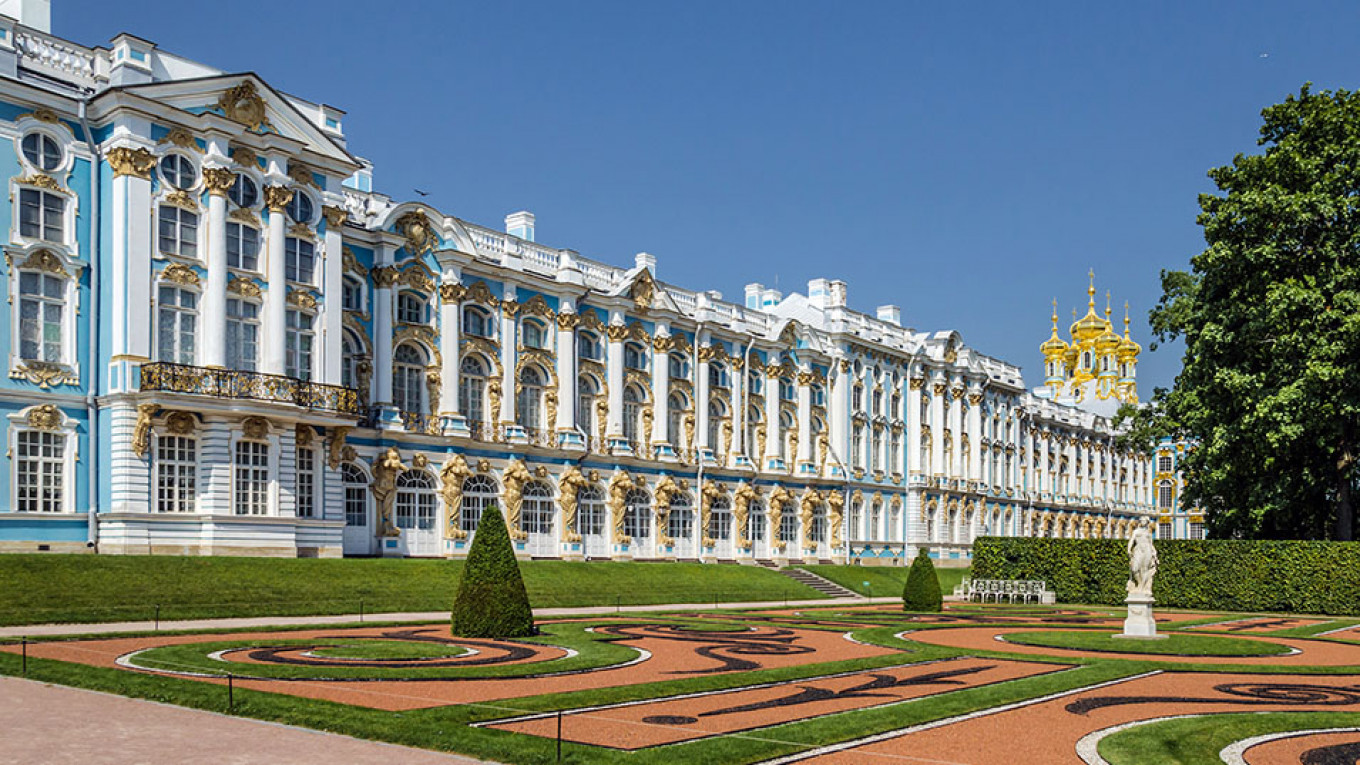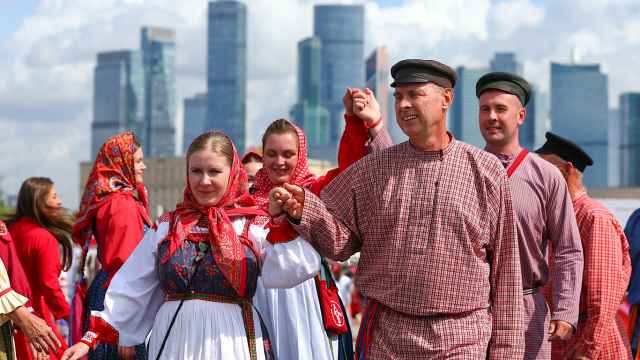For over two hundred years, the epicenter of Imperial Russian power was more often found on the outskirts of St. Petersburg than in its heart. The Romanovs had many residences, but none symbolized the dynasty’s autocratic power more than the opulent Catherine Palace, the jewel in the crown of Tsarskoye Selo, “the Tsar’s village.”
A Swedish war trophy
Though it perfectly describes the nature of the suburban town, “Tsarskoye Selo” is an adaptation of an earlier Swedish name for the estate, “Saraskoi Muisa” or “Sarah’s Village.” The land was just one more war trophy in Peter the Great’s Northern War against Sweden; in 1703 Peter captured the nearby swampy delta of the River Neva with its strategic access to the Baltic Sea, and began to build his new imperial capital, hastily constructing for himself, legend says, a modest log cabin as a temporary residence. But, from the moment Saraskoi Muisa caught the eye of Peter’s second wife, Catherine, it would only ever be referred to as “Tsarskoye Selo.”
Catherine had no doubt grown weary of living in a building site. Though her own origins were humble — she caught Peter’s eye when she was just nineteen, a Lithuanian peasant, employed by a Russian aristocrat as a laundrywoman — the log cabin was probably too small for two, especially if one of the two was the almost seven-foot Peter. The Swedish estate had many advantages: it was on much higher ground than the mosquito-infested marshes of the new capital, and thus safe from the frequent flooding, which plagued St. Petersburg. The air was fresh, and the views charming. The Empress built a small stone villa, which delighted Peter when he visited at her invitation.
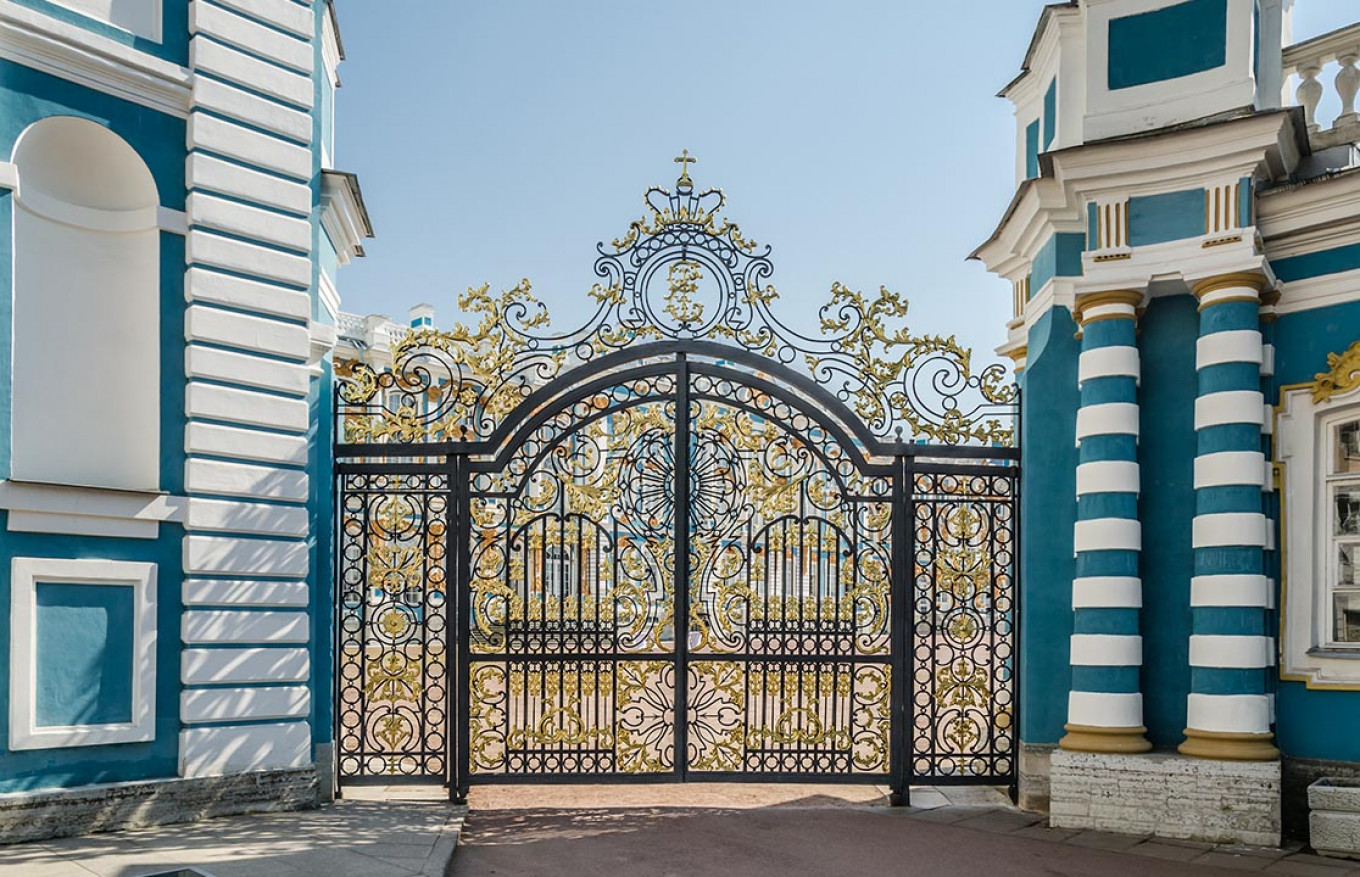
“The work of Penelope”
When she came to the throne in 1741, Peter and Catherine’s daughter Elizabeth envisioned a much grander footprint for the palace she named in her mother’s honor. Summoning her favorite architect, Italian Bartolomeo Rastrelli, Elizabeth ordered him to makeover the Catherine Palace much in the way he had assembled a new Winter Palace for her cousin, Empress Anna Ivanovna.
Rastrelli and Elizabeth worked well together, his expansive imagination a perfect match for her generous budget and exacting standards. Catherine the Great, who witnessed Rastelli’s numerous do-overs, likened the renovation to, “the work of Penelope: the next day the previous day’s work [is] destroyed.” But Elizabeth was so delighted with the finished product that she made Rastrelli a Russian count.
Rastrelli created a classic seventeenth-century setting for a French levée. Visitors to the Catherine Palace hardly had time to marvel over the solid marble Formal Staircase before being drawn into one continuous enfilade of rooms leading to the Empress, who was called “the Russian Venus.” This architecture created drama and anticipation and suited Elizabeth’s love of pageantry and ceremony. For formal occasions, Rastrelli created the magnificent Grand Ballroom with eleven high windows to let the sunlight burnish the richly gilded reliefs on the walls and set the mirrored walls glittering.
Rastrelli was a master at making the most of the materials he found in Northern Russia. There was very little suitable stone for masonry in the environs of St. Petersburg, so Rastrelli used plaster, perfecting the art of creating painted façades with elaborate sculptures. The stunning turquoise 1,200-foot façade of the Catherine Palace was set off by almost life-sized caryatids, today no longer gilded in solid gold as in Rastrelli and Elizabeth’s opulent time. Nor are the sculptures which graced the roof, which prompted many of the peasants in surrounding villages to believe that the roof was made of solid gold.
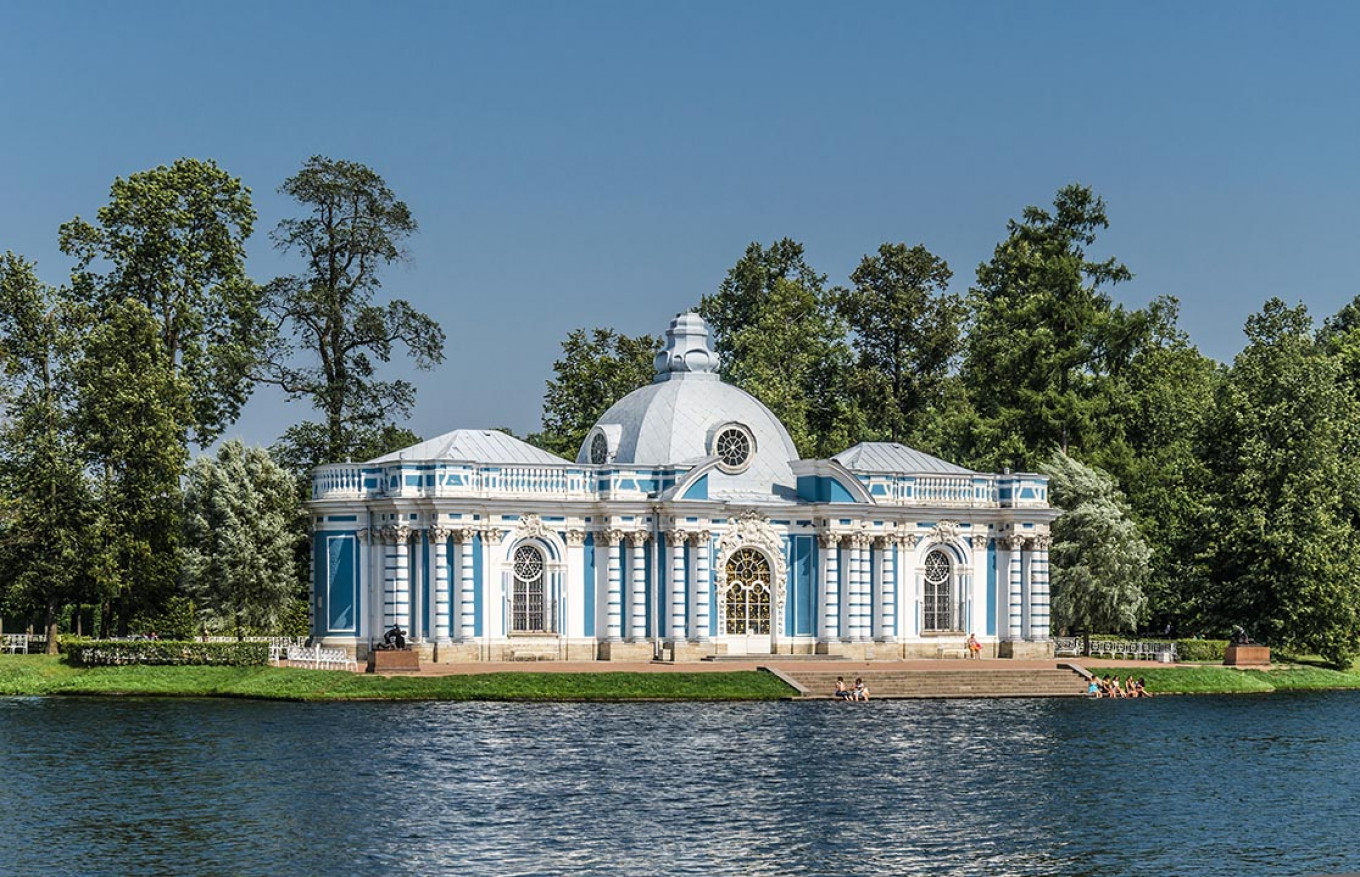
“Only in the 'Thousand and One Nights' and in fairy tales”
Rastrelli was not opposed to repurposing imperial hand-me-downs, especially if they were unique, as were the magnificent amber panels King Frederick William I of Prussia gave Peter the Great in 1716. Both monarchs were too busy fighting the Swedes to worry about décor, but Elizabeth commissioned Rastrelli to build a room in the Catherine Palace for the panels. Rastrelli used mirrors and candles to highlight the beauty of the panels, making the Amber Room one of the great wonders of the day. Théophile Gautier noted in his “Voyage en Russie” that the Amber Room was something found “…only in the ‘Thousand and One Nights’ and in magic fairy tales…The eye, which was not adapted to seeing this material applied in such scale, is amazed and is blinded by the wealth and warmth of the tints, representing all colors of the spectrum of yellow — from smoky topaz up to light lemon. The gold of carvings seems dim and false in this neighborhood, especially when the sun falls on the walls …”
“Their feet must be on the ground and not in the clouds.”
Rastelli’s overhaul of the Catherine Palace for Empress Elizabeth represented the zenith of his very particular brand of Russian baroque.
For Catherine the Great, who spent many unhappy journeyman’s years as the wife of Elizabeth’s heir, Grand Duke Peter, at Tsarskoye Selo, the temptation to make changes of her own were irresistible. Catherine favored the cleaner lines of the classical and palladian style, but this was not merely an aesthetic choice: The Empress set about remaking Russia’s image to the outside world, and architecture was just one of the tools she employed.
Classical architecture was a hallmark of the mighty empires of antiquity, while the principles, outlined by Andrea Palladio in his “Four Books of Architecture,” reflected the Enlightenment values Catherine so eagerly embraced at the beginning of her reign. Where the energetic empress went, Russia’s nobility eagerly followed—graceful mansions and country homes in the classical style began to appear all over Russia.
Catherine left the façade as it was, though she removed the gold gilding and replaced it with more serviceable and cost-effective paint. She summoned architects and horticulturalists to make over her private rooms, construct outbuildings, and design the graceful English gardens of the palace’s park. In 1779, Catherine wrote to Baron Melchior von Grimm asking him to “find two good architects, Italians and clever at their work…and dispatch them from Rome to Petersburg like a bag of tools… choose honest and sensible men, not men like Falconet, their feet must be on the ground and not in the clouds.” The result was the arrival of Charles Cameron, who created Catherine’s favorite haunts at Tsarskoye Selo: including the Agate Rooms and Cameron Gallery, decorated with busts of philosophers and thinkers the empress admired. Cameron also designed Catherine’s private rooms, where William Richardson reported that “she lays aside all state, and lives with her ladies on the footing of as easy intimacy as possible.”
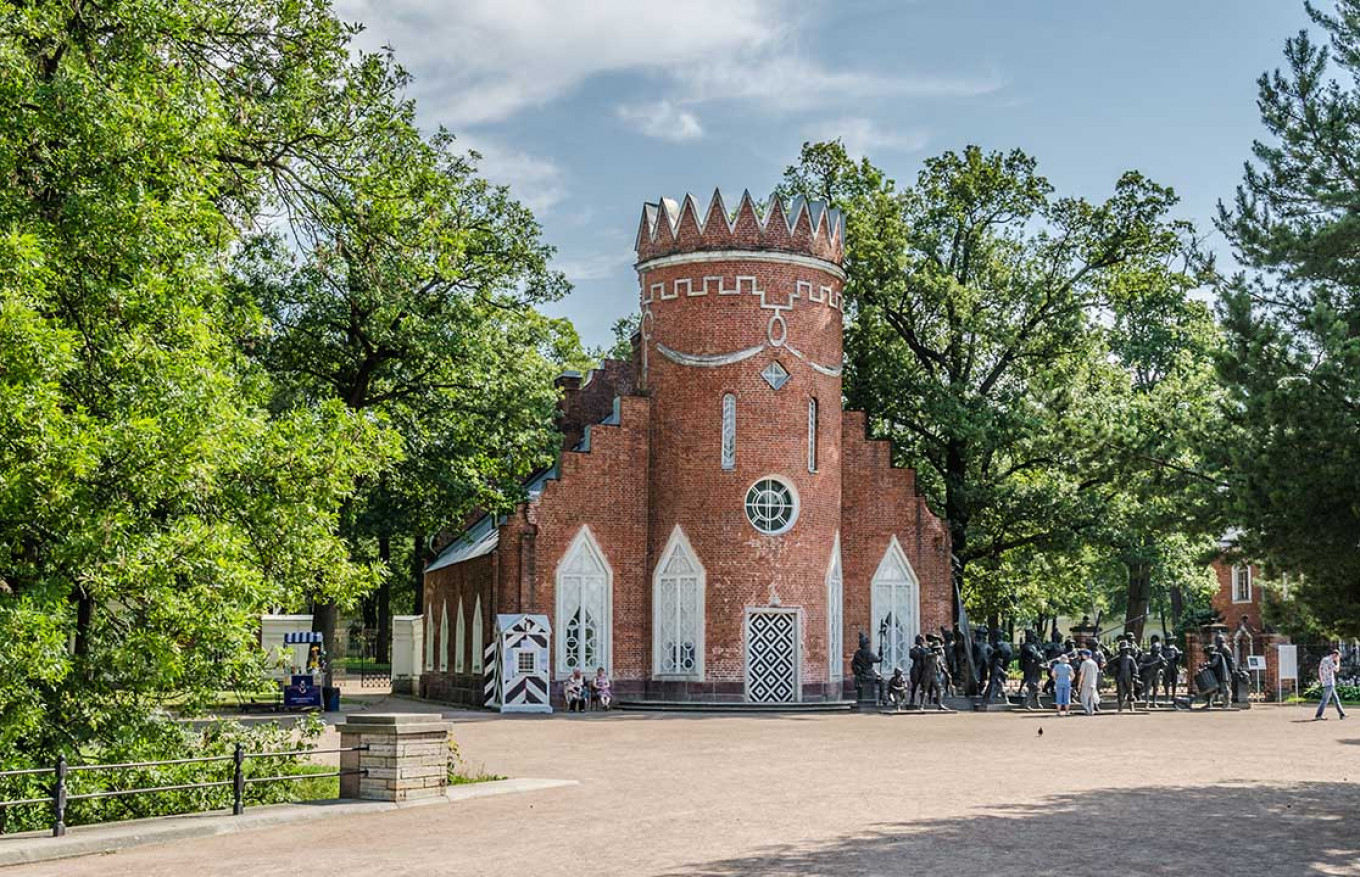
The Lycée
Catherine the Great carefully supervised the upbringing of her two eldest grandsons: Alexander and Konstantin, creating a schoolroom for them in the Catherine Palace. Alexander later established the lessons as the famous Tsarskoye Selo Lycée, a high school for aristocratic boys to train them for positions in the imperial government. The most famous graduate of the Lycée was Alexander Pushkin, Russia’s beloved poet, who celebrates one master, Kunitsyn, in his poem, “19th of October,” with placing him on the path of greatness:
“He created us; he nurtured our flame.
He laid the foundation stone for us,
He lit the pure lamp.”
From imperial to people’s palace
Following the assassination of Tsar Alexander II in 1881, security became a constant worry for the imperial family. Alexander III relocated his family to nearby Gatchina, and Nicholas II and his wife, Alexandra retreated to the Alexander Palace, the palladian palace built by Giacomo Quarenghi for Catherine as a present for her grandson. Tsarskoye Selo became a heavily guarded fortress and a symbol of the out-of-step monarchs who lived there. Few ever managed to catch a glimpse of life beyond the stately Egyptian Gates, but one who did was Gleb Botkin, the son of Dr. Evgeni Botkin, who went into exile with the Imperial Family and was murdered with them in 1918. After the Revolution, Botkin recalled the hermetically sealed world of Tsarskoye Selo as, “…a legendary place. To the loyal monarchists, it was a sort of terrestrial paradise, the abode of the earthly gods. To the revolutionaries, it was a sinister place, where bloodthirsty tyrants were hatching their terrible plots against the innocent population.”
Tsarskoye Selo was renamed “Pushkin” by the Bolsheviks and the richly decorated wrought iron gates were thrown open to the population of the new Soviet state. Farmers, factory workers and students came in groups to shuffle across the polished parquet floors in felt slippers and gasp at the Formal Staircase of solid marble, and blink incomprehensively at the vibrant amber panels, wondering if it were really true that it now all belonged to the people.
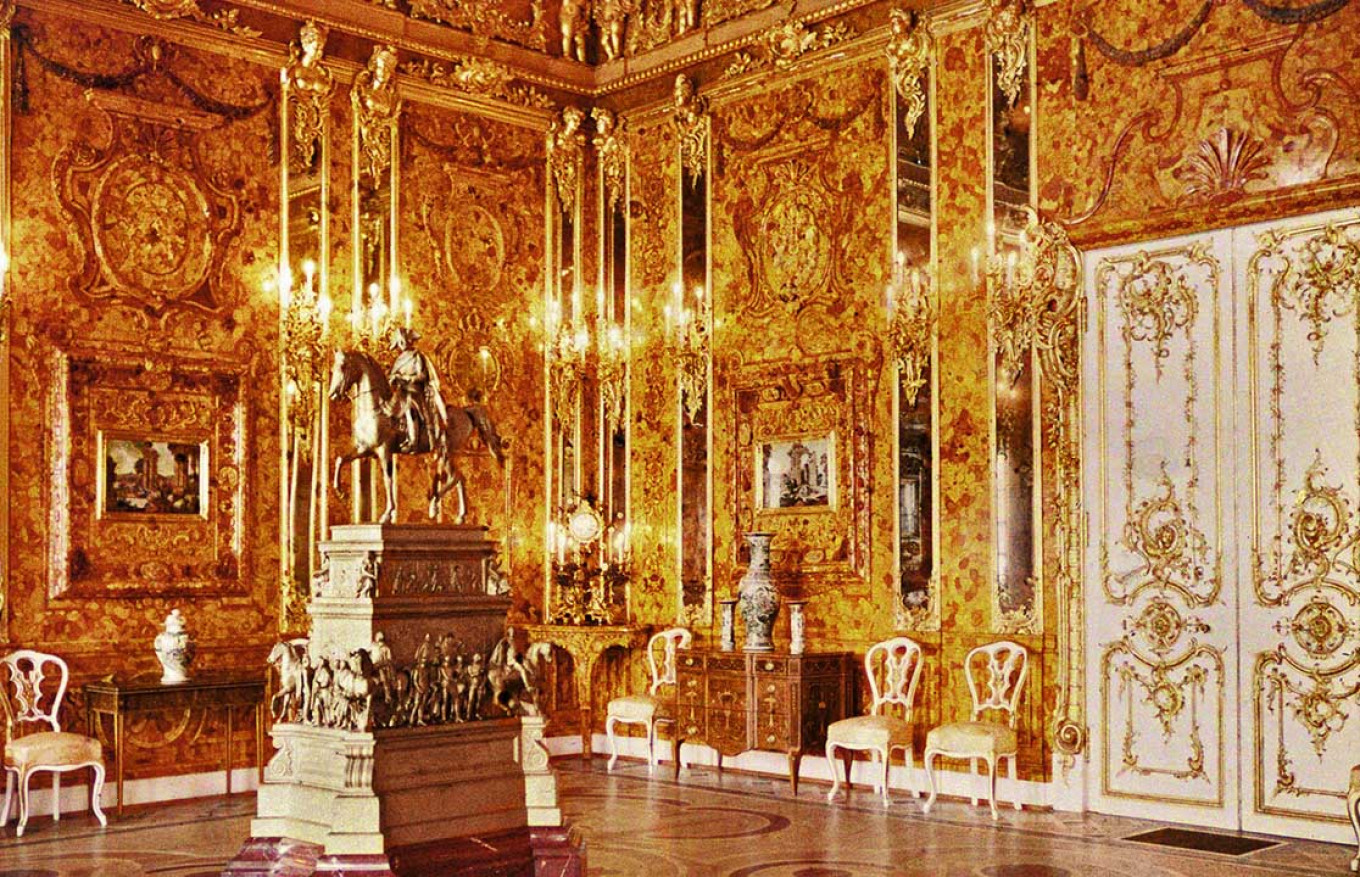
War, occupation and the mystery of the Amber Room
Their euphoria was short-lived. In June of 1941, the Nazis launched Operation Barbarossa: the invasion of the Soviet Union. Palace workers scrambled to pack up the treasures of Tsarskoye Selo and send them by rail deep into the country’s interior. Into padded crates with sawdust went priceless porcelain, furniture, paintings, and miniatures. But the Amber Room presented a unique challenge. Central heating, installed in the palace after the Revolution, had made the large and unwieldy panels brittle and fragile.
The museum directors were presented with an impossible dilemma. They could try to dismantle the panels and run the risk of damaging them permanently or attempt to hide Amber Room in plain sight, knowing full well that the famed Prussian masterpiece had to be high on the list of artwork Hitler was eager to claim in the name of the Third Reich.
There was no time to agonize over the decision: The museum directors chose to leave the Amber Room in place. They lined the glittering walls with layers of cotton wadding and gauze then dumped several layers of sand onto the intricate parquet floor. Then, hoping against hope, they abandoned the Catherine Palace to its fate.
It did not take the Nazis long to find the prize they sought what they called the “Bergenzimmer.” They dismantled the panels, packed them into 27 crates, and shipped them off to Konigsberg, today’s Kaliningrad. At Konigsberg Castle, the director, Dr. Rohlde, who had dedicated his life to the study of amber, was ecstatic to take delivery of the precious panels, and convinced that they had “returned to [their] true home, the only origin of the amber.” There was general rejoicing when the panels went on public display: For thousands of war-weary Germans, the return of the Bergenzimmer represented tangible proof that the Nazis were gaining ground against their foes.
Heavy Allied bombing reduced Konigsberg Castle to rubble, but there was no sign of the Amber Room after the war. Fervent searches across Eastern Europe — deep in the bowels of salt mines, in factory cellars, even at the bottom of the Baltic Sea— have failed to unearth the precious trove of Amber Panels gifted to Peter the Great.
Tsarskoye Selo itself was occupied by the German forces until 1944. Catherine’s elegant Agate Rooms, lined with the busts of philosophers, was used as the mess hall. The magnificent Formal Staircase was blown to bits, and many of Rastelli’s elegant rooms were simply destroyed. The palace was a shell when Soviet troops retook the town.
A large-scale, decades-long renovation project has restored the Catherine Palace to its former glory, and a replica of the Amber Room was constructed with funding from German Ruhr Gas. The search for the real Amber Room continues, despite cold trails and a curious curse that seems to kill off those who get close to unraveling the mystery.
As for Tsarskoye Selo and the Catherine Palace, tens of thousands of visitors still shuffle through in felt slippers, polishing the parquet floors as they do, to marvel at the magnificent life of generations of Romanovs.
A Message from The Moscow Times:
Dear readers,
We are facing unprecedented challenges. Russia's Prosecutor General's Office has designated The Moscow Times as an "undesirable" organization, criminalizing our work and putting our staff at risk of prosecution. This follows our earlier unjust labeling as a "foreign agent."
These actions are direct attempts to silence independent journalism in Russia. The authorities claim our work "discredits the decisions of the Russian leadership." We see things differently: we strive to provide accurate, unbiased reporting on Russia.
We, the journalists of The Moscow Times, refuse to be silenced. But to continue our work, we need your help.
Your support, no matter how small, makes a world of difference. If you can, please support us monthly starting from just $2. It's quick to set up, and every contribution makes a significant impact.
By supporting The Moscow Times, you're defending open, independent journalism in the face of repression. Thank you for standing with us.
Remind me later.



